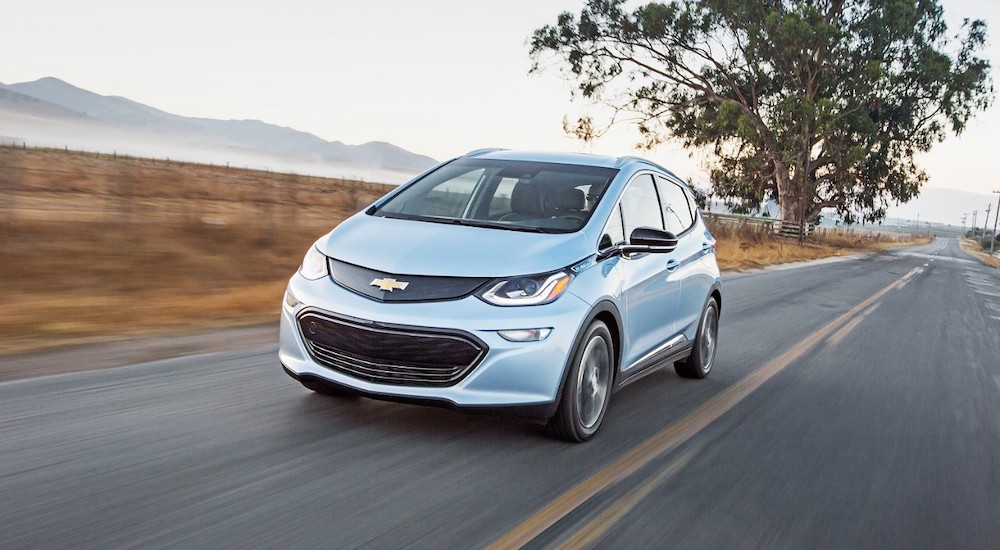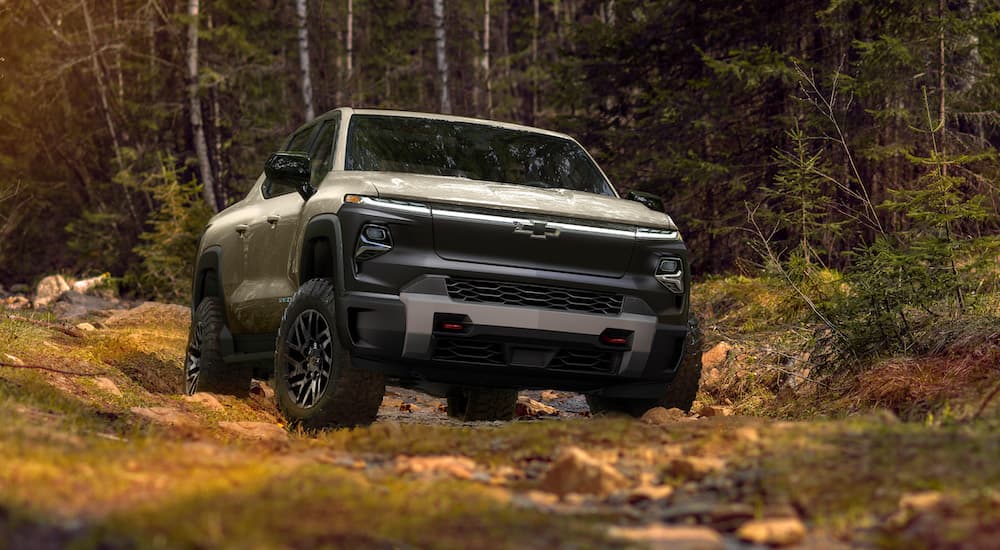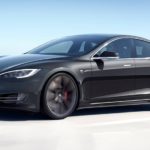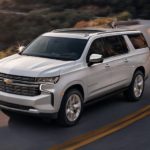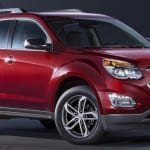On April 22, 1970, Earth Day was first observed. Unlike so many trumped-up days that seem to have a hidden agenda from the greeting card industry or provide a reason to party, Earth Day represents the drive and ambition to instill positive changes in the world. In 1970, there was no EPA or any other programs in place to look after the environment and provide for its longevity and well-being. Earth Day is observed each year as a reminder that we all have to do our part to take care of the planet we all call home.
With a multitude of organizations and protocols now in place and industry regulated and held accountable, it appears we’re more involved than ever before in doing our part. Among those striving to be the change we all want to see are various manufacturers in the automotive industry. Now more than ever, many have shifted their focus to the manufacturing of EVs, which has done a significant amount of good in reducing the harmful emissions caused by the use of the internal combustion engine, making the inventory at your local Chevy dealership a little more interesting. Consumers are also benefiting from this initiative as gas prices continue to fluctuate and increase the overall cost of living.
The question then becomes, which manufacturers will achieve dominance in a marketplace that will be geared more towards electric vehicles and not gas-powered ones? With Volkswagen announcing that they plan to eventually have EVs become the majority of their fleet and Tesla leading the way in electric propelled innovation, where does that leave Chevrolet? For well over a century, the bow-tie brand has been an institution and has shown an ability to adapt to the various trends and cultural shifts that the world has witnessed. Who knows? It might only be a matter of time until we see a Chevy dealership have nothing but EV Chevys for sale.
The EV Seeds Are First Planted
While the rise in popularity of the EV is certainly something that’s associated with the new millennium, GM’s first efforts in “going electric” can be traced back to the late 1990s, a time period that could be considered the proving ground for the EV. The EV1, as it was called, possessed a relatively short life as it was only available through leasing and in select cities in California and Arizona. In production from 1996 to 1999, nothing ever came of the vehicle long-term, and rumors of self-sabotage have painted the vehicle’s place in the history of the EV in a negative light. GM’s termination of the program had less to do with controversy and more to do with generating sales. Every journey has to start somewhere, and the EV1 allowed the seeds of the EV to be planted, and in time they would blossom.
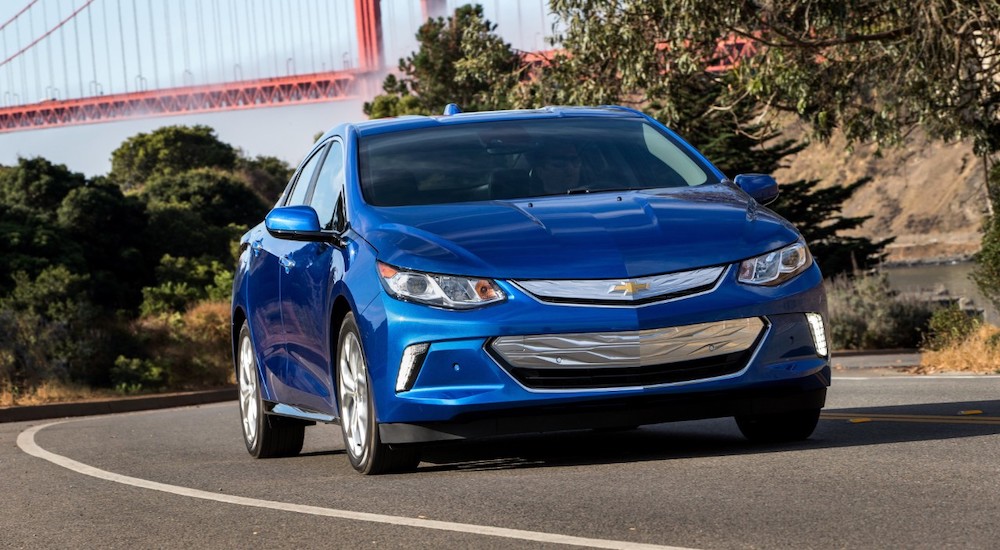
Going Electric With a Volt, A Spark, and a Bolt
The EV seeds that Gm planted resulted in Chevy having quite a few models that went hybrid and allowed for improved fuel consumption and viable transportation options for consumers. The flagship vehicle of this new breed of bow-tie brand was the Chevy Volt which made its debut for the 2011 model year. And what’s debut it was, a range of 380 miles with a combined mix of gasoline and electricity made for an efficient vehicle.
The success of the Volt was followed a few years later, with an all-electric version of the Chevy Spark arriving for the 2014 model year. The fully electric compact car, while only in production for a three-year period, was more than adequate at providing consumers with a vehicle that required no gasoline. While only having a full range of 82 miles on a single charge, the EPA estimated that the ownership of one would save consumers well over $10,000 in fuel costs over a five-year period. While it wasn’t the most stylish of the EVs to come out in the past few decades, one couldn’t take away the fact that it was cost-effective and practical.
The 2017 model year would prove to be the year where Chevy proved itself adept at mastering EV technology. The arrival of the Bolt EV managed to combine all of the best elements from the previous years into one vehicle. The Bolt EV was larger than the subcompact Spark and was equipped with an all-electric powertrain that made it more efficient than previous attempts at an EV had been. A range of 238 miles on one charge almost tripled that the Spark EV had been able to accomplish. And while the Volt and Spark EV are no longer in production, the Bolt EV has remained Chevy’s flagship EV since its debut.
The Best Laid Plans for Future Endeavors
So, where does Chevy go from here? With so many other manufacturers having an unbridled ambition to corner the marketplace and take the EV to heights previously unimagined, Chevy has some mighty hills to climb. However, as we’ve already seen with some of their announcements, they intend on ascending them and staying at the top. The biggest announcement from Chevy that was made in early 2022 was the Silverado EV. This is quite an ambitious step for Chevy, as they’ve gone from compact cars and small-sized SUVs to one of the most celebrated pickups on the market.
While some might have had considerable doubt about an electric motor providing the same amount of workhorse prowess as the diesel and gas-fueled trucks of the GM brand, the specifications released from Chevy certainly silence any skeptics. With the ability to go up to 400 miles on a single charge and the base trim levels having over 500 horsepower underneath the hood, it appears that Chevy is once more ahead of the curve. Recent announcements of EV technology being adapted to both the Blazer and Corvette only confirm what millions have known all of this time, that Chevy has the capability to adapt to any significant changes that occur within the industry and far beyond it.
Electrifying Things Are Happening
Some changes occur much faster than others. While it might appear that Chevy’s desire to embrace EV technology and adapt it to its fullest potential has been moderate, the leaps and bounds that they’ve been able to accomplish are nothing short of remarkable. From testing the waters in the late 1990s to applying it to smaller-sized vehicles in the 2000s, Chevy has managed to not rush anything into production and allow time for their creative process to move at a pace that matches manufacturing and technological breakthroughs.
With the Silverado and Blazer being made with EV technology, it’s more than apparent that Chevy has its sights set on not just the expansion of its EV fleet but the further development of the technology and applying it in bold new directions. Because the automotive industry is one that operates on the adherence to trends and practices, it’s quite possible that Chevy’s newest moves will force the hand of several other manufacturers to develop EV versions of vehicles that just a decade ago were thought of as nearly impossible. And while the market may change and trends will always fluctuate, it’s safe to say that Chevy will be there to adapt just as it’s always done.
